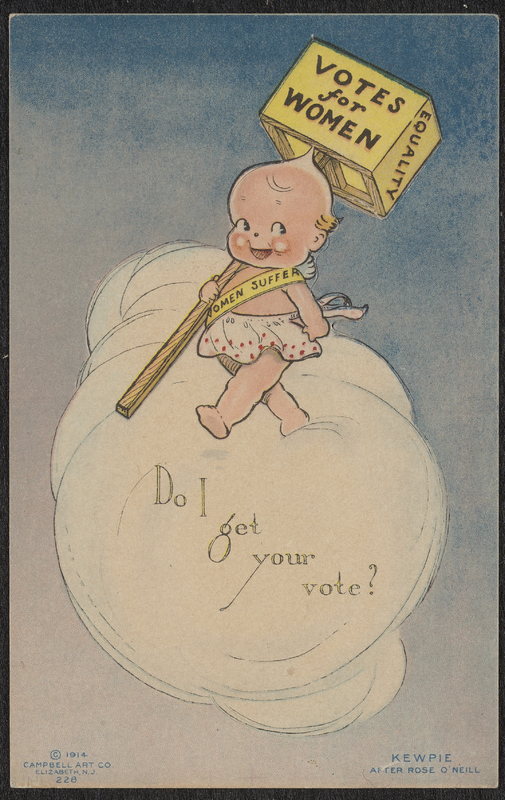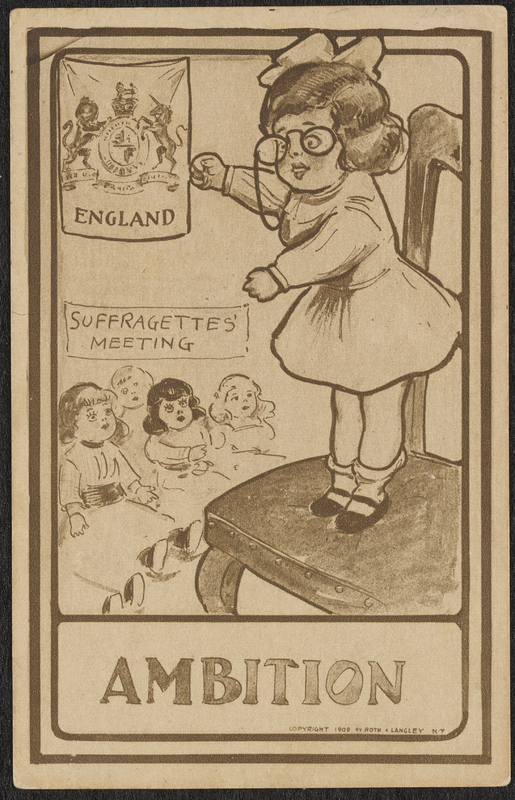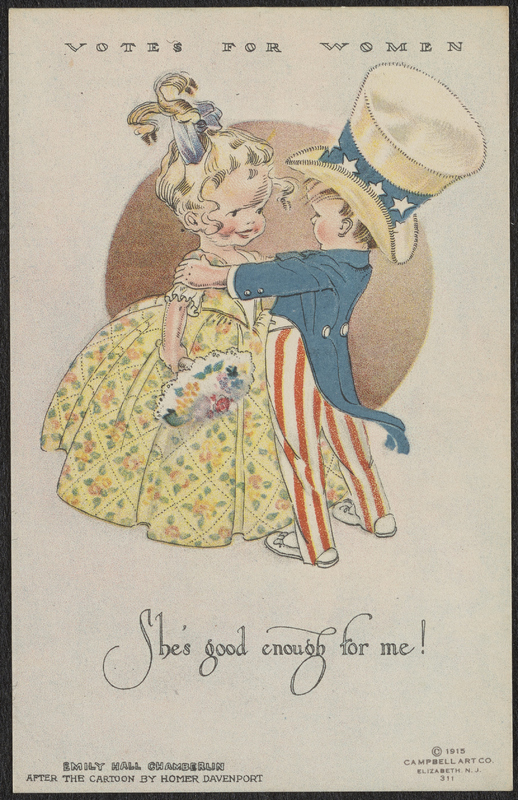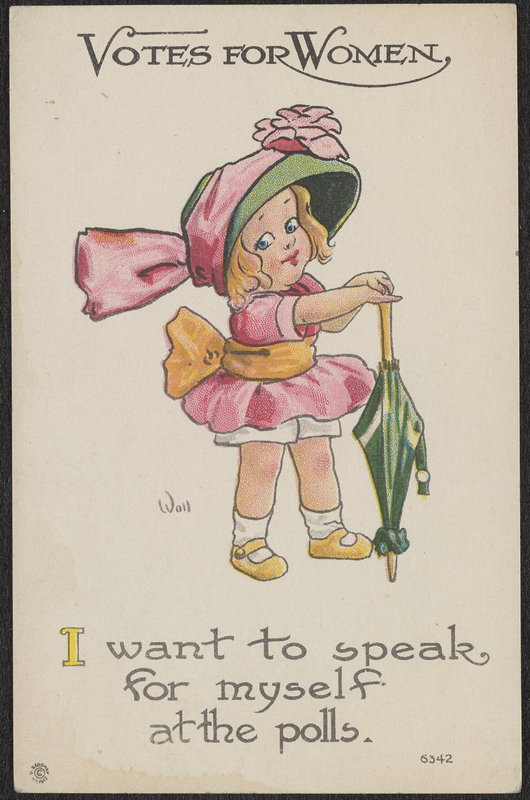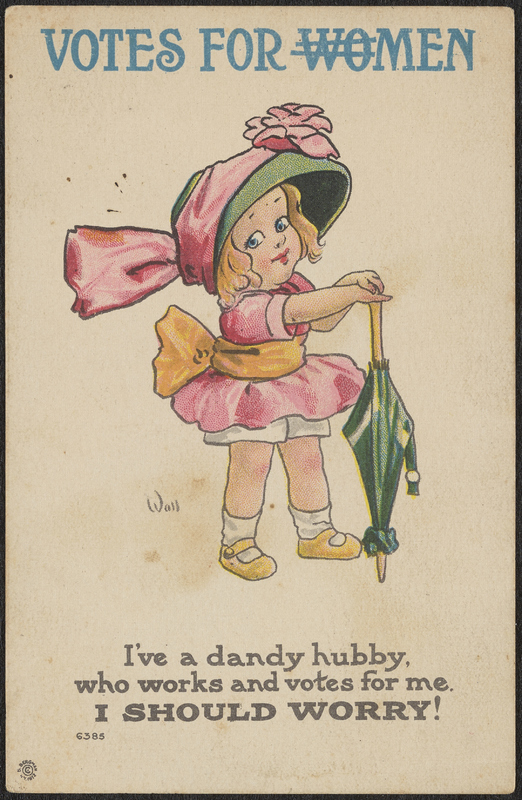Of Suffrage and Kewpies
In 1913, artist and suffragist Rosie O’Neill patented the Kewpie. These cute, little creatures with “rosy cheeks” quickly became a national phenomenon. The Kewpie increasingly was featured in pro-suffrage magazine cartoons, popularized as dolls, and incorporated into advertisements. O’Neill used the popularity of the Kewpie and its innocent, pure image to justify and support women’s suffrage, often portraying suffragettes as Kewpies in cartoons and postcards. This aligned with a broader trend in women's suffrage postcards to include illustrations of children. The Kewpie and images of children helped to promote a vision of women’s suffrage that was non-threatening and pure, while countering anti-suffrage characterizations of suffragettes as manly and ugly. These motifs helped minimize the animosity of the pro- and anti-suffrage conflict, and advanced or subverted the suffrage cause in different ways.
Ivy Xun, curator
